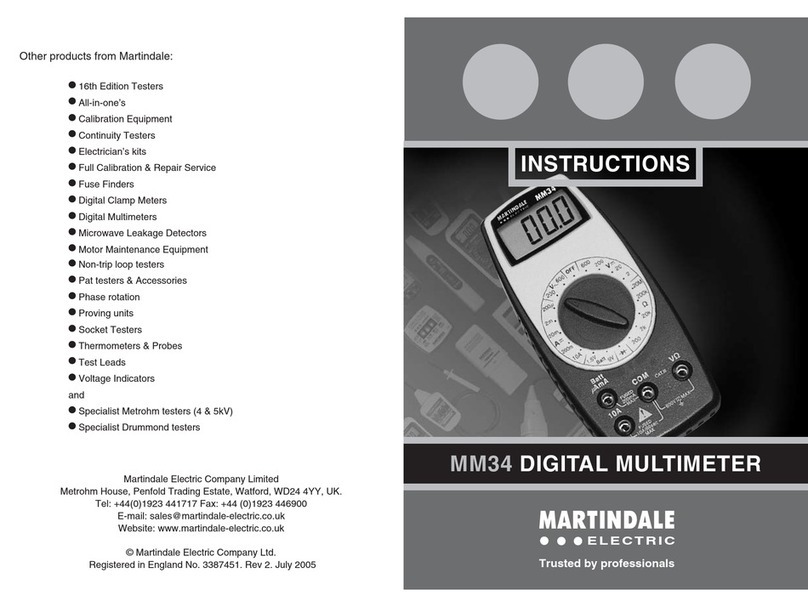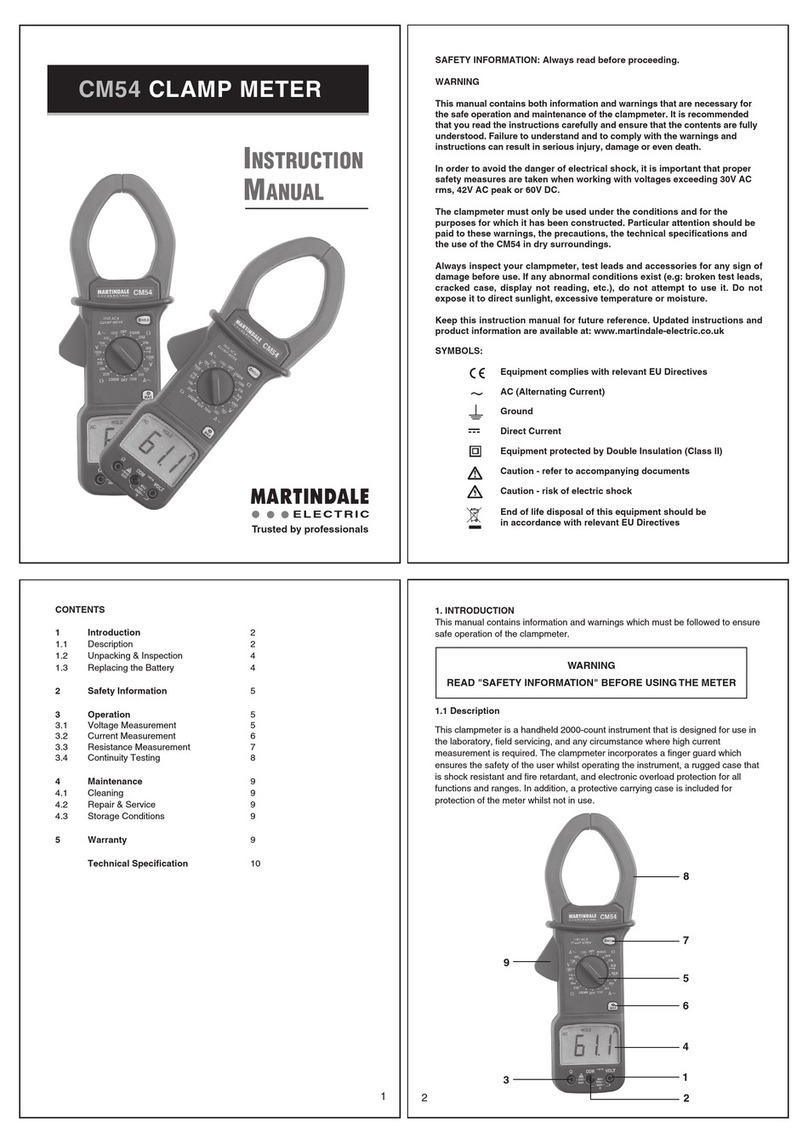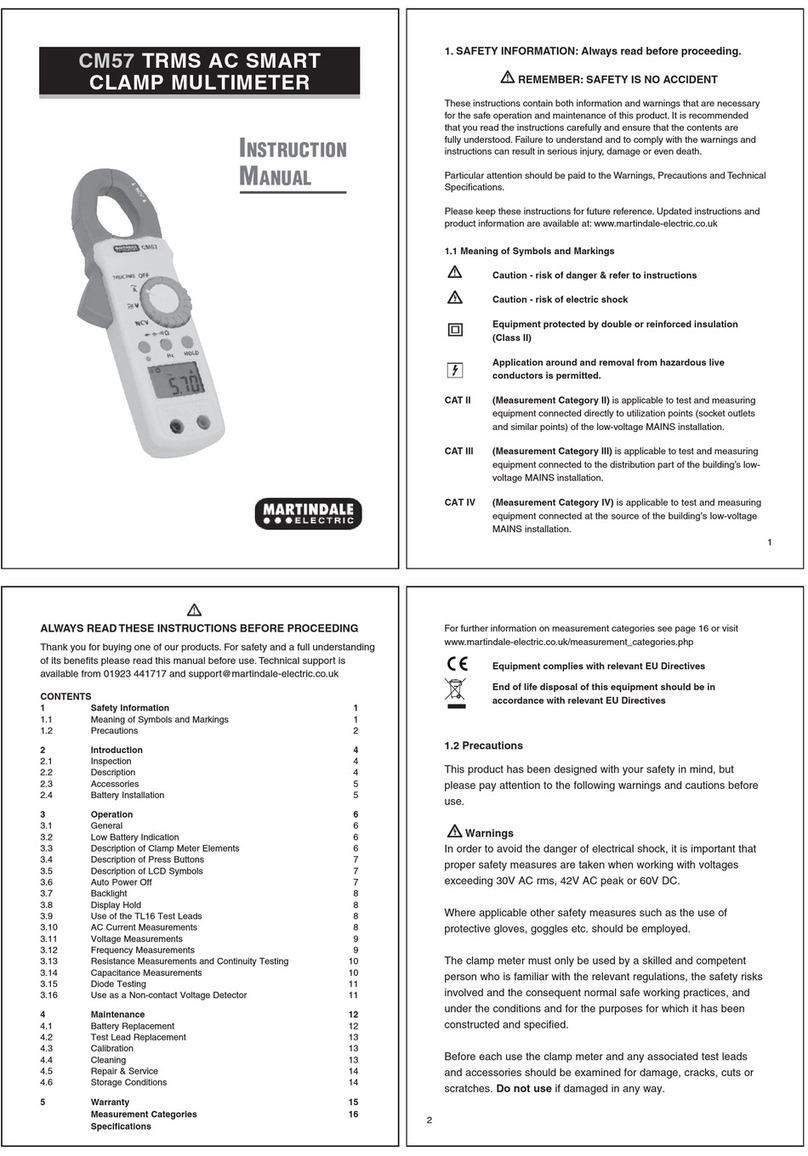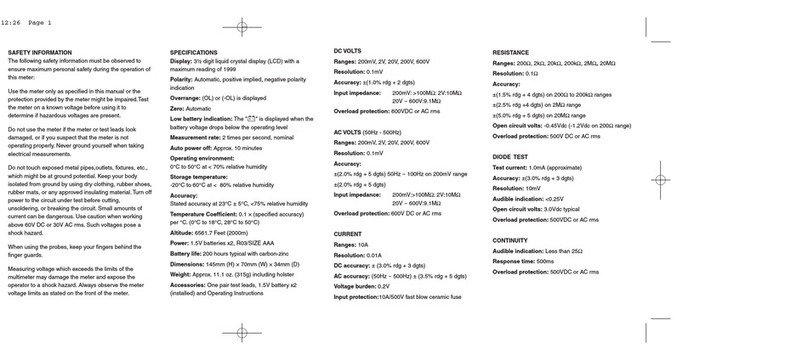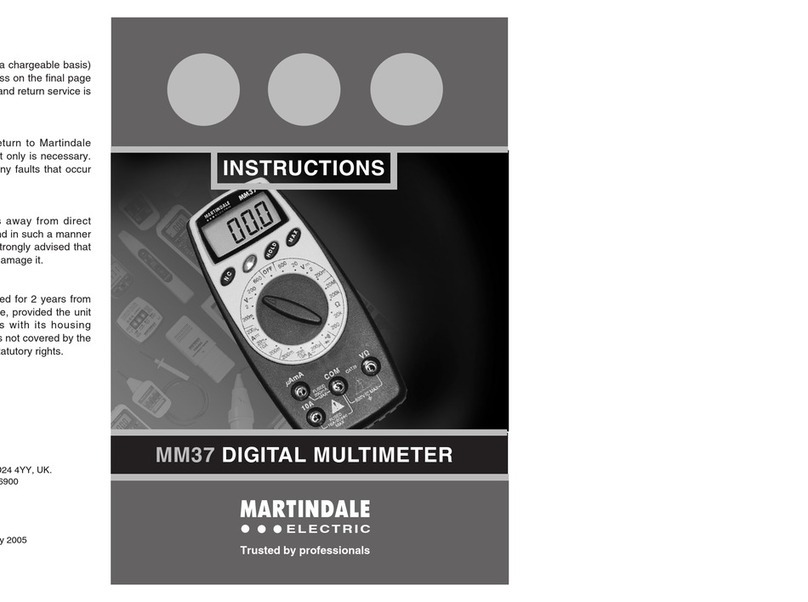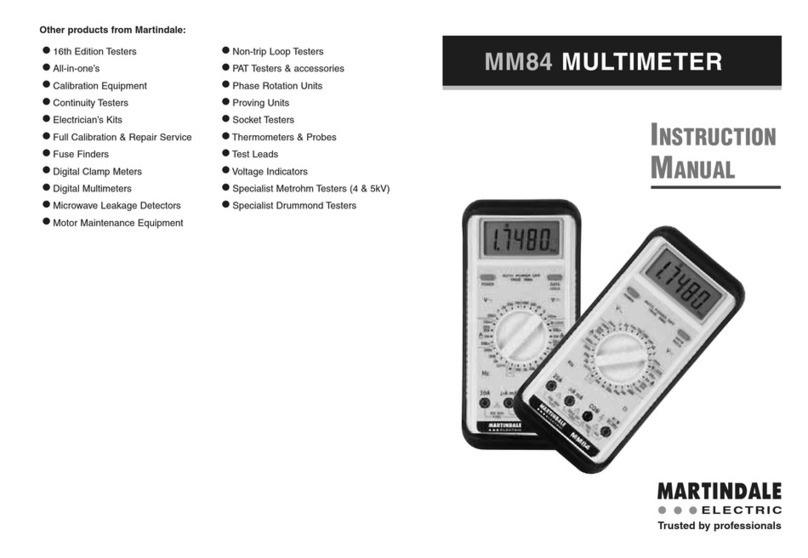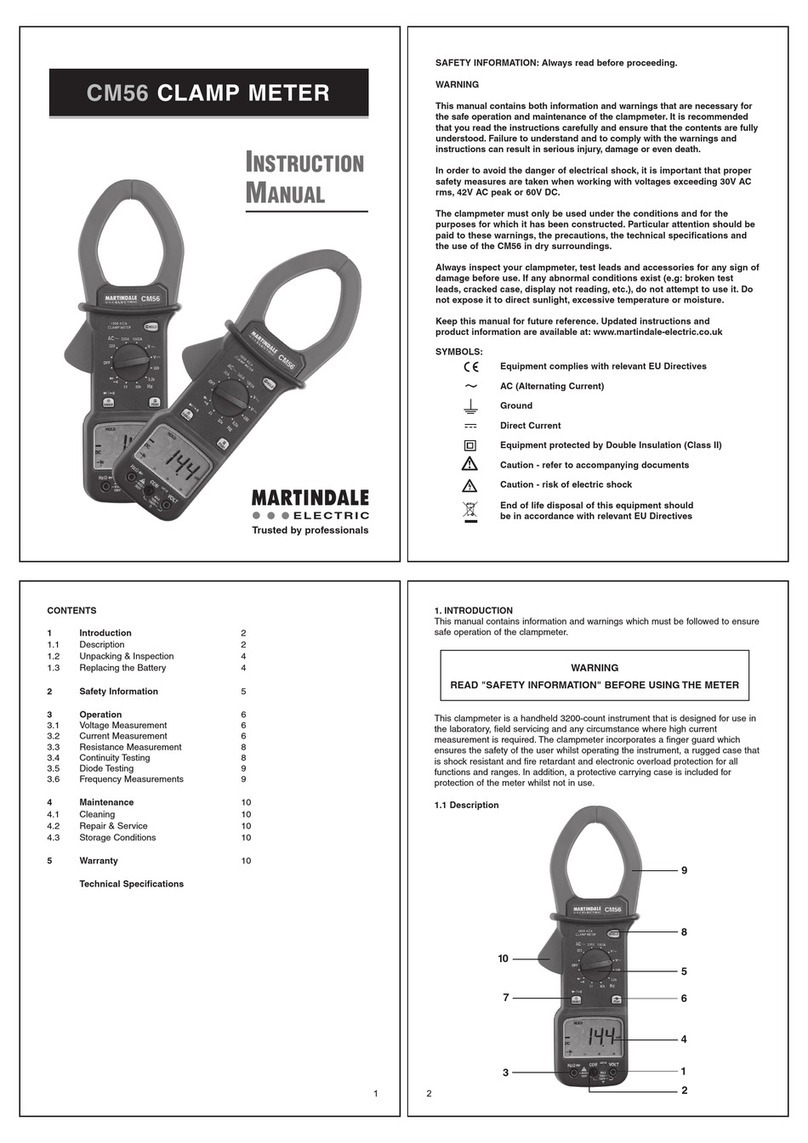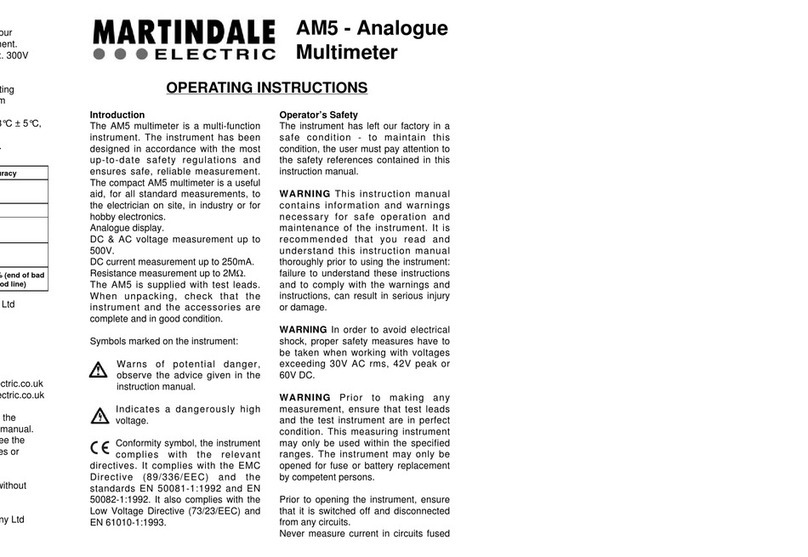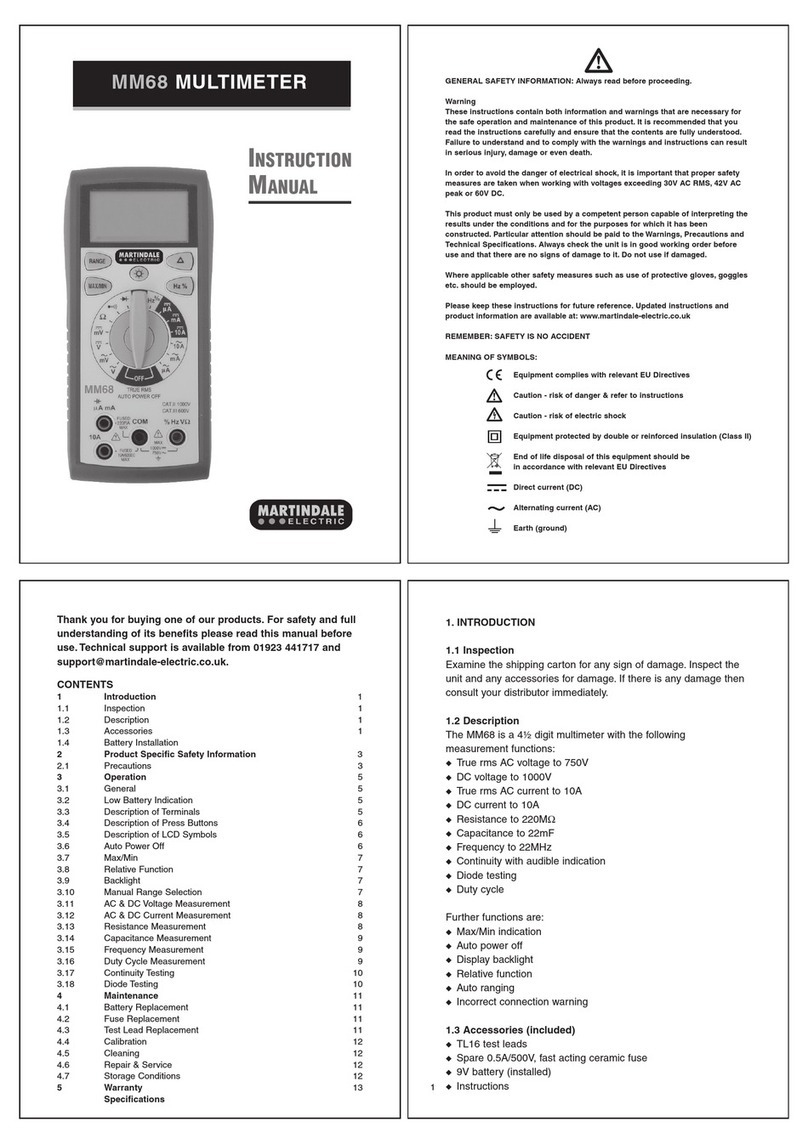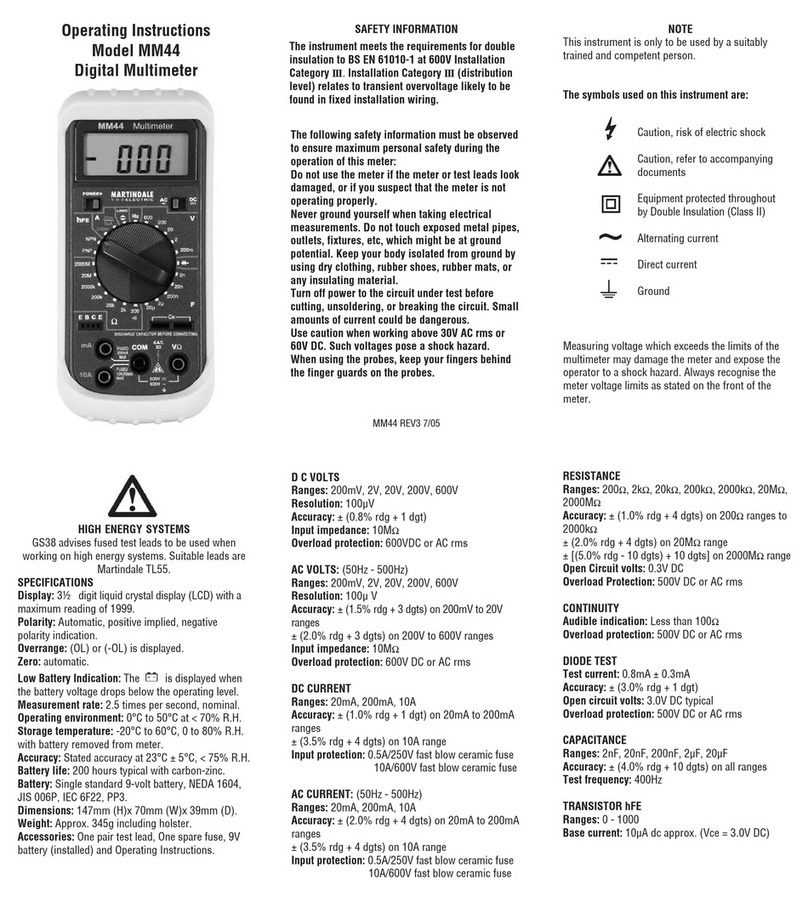MAINTENANCE
Battery Replacement
Power is supplied by a 9 volt "transistor" battery.
(NEDA 1604, IEC 6F22, PP3). The appears on
the LCD display when replacement is needed. To
replace the battery, remove the three screws from the
back of the meter and lift off the front case. Remove
the battery from case bottom.
Fuse Replacement
If no current measurements are possible, check for a
blown overload protection fuse. For access to fuse,
remove the three screws from the back of the meter
and lift off the front case. Replace only with the
original type 2A/600V, fast acting ceramic fuse. The
use of other fuses may cause damage to the meter,
invalidate the warranty and impair the instrument’s
safety. Domestic “Plug Top” fuses should not be
used.
OPERATION
Before taking any measurements, read the Safety
Information Section. Always examine the instrument
for damage, contamination (excessive dirt, grease,
etc.) and defects. If any abnormal conditions exist
do not attempt to make any measurements.
Voltage Measurements
1. Connect the red test lead to the "VΩA" socket and
the black test lead to the "COM" socket.
2. Set the Function/Range switch to the desired
voltage type (AC or DC) and range. If magnitude of
voltage is not known, set switch to the highest range
and reduce until a satisfactory reading is obtained.
3. Connect the test leads to the device or circuit
being measured.
4. For DC, a (-) is displayed for negative polarity;
positive polarity is implied.
Current Measurements
1. Connect the red test lead to the “VΩA” socket and
the black test lead to the “COM” socket.
2. Set the Function/Range switch to the 2A DC
range.
3. Remove power from the circuit under test and
open the normal circuit path where the
measurement is to be taken. Connect the meter IN
SERIES with the circuit.
4. Apply power and read the value from the display.
Resistance Measurements
1. Set the Function/Range switch to the desired
resistance range.
2. Remove power from the equipment under test.
3. Connect the red test lead to the "VΩA" socket and
the black test lead to the "COM" socket.
4. Connect the test leads to the points of
measurements and read the value from the display.
Diode Tests
1. Connect the red test lead to the "VΩA" socket and
the black test lead to the "COM" socket.
2. Set the Function/Range switch to the position.
3. Turn off power to the circuit under test. External
voltage across the components causes invalid
readings.
4. Touch probes to the diode. A forward-voltage drop
is about 0.6V (typical for a silicon diode).
5. Reverse probes. If the diode is good, "I" is
displayed. If the diode is shorted, ".000" or another
number is displayed.
6. If the diode is open, "I" is displayed in both
directions.
Transistor Gain Measurements
1. Set the Function/Range switch to the desired hFE
range (PNP or NPN type transistor).
2. Never apply an external voltage to the hFE sockets.
Damage to the meter may result.
3. Plug the transistor directly into the hFE sockets.
The sockets are labelled E, B and C for emitter, base
and collector.
4. Read the transistor hFE directly from the display.
Battery Test
1. Connect the red test lead to the "VΩA" socket and
the black test lead to the "COM" socket.
2. Set the Function/Range switch to the desired 1.5V
or 9V battery test range.
3. Connect the test leads to the 1.5Vdc battery under
test. Normally, a good 1.5Vdc battery will read above
1.25Vdc. Consult the battery manufacturer for
complete battery specifications to determine actual
battery life remaining and condition of battery.
Instrument Repairs and Spare Parts
Apart from the battery and fuse, there are no user
serviceable parts inside. If you suspect that the meter
is not operating properly, please check fuse, battery
and leads.
If the meter is still suspected of being faulty please
contact:
Metrohm House, Penfold Trading Estate,
Imperial Way, Watford, Herts. WD24 4YY, UK.
Tel: 01923 441717 Fax: 01923 446900
Web Site: http://www.martindale-electric.co.uk
MM42 REV3 7/05
Accessories
F1 - 1 x 1/4” 2A 600V ceramic - Ref: FUSE2600
(pack of 3)
Replacement original leads - Ref: TL16
Fused test leads to GS38 specification - Ref: TL55
Soft foam lined carry case - Ref: TC55
WARNING
Remove test leads before changing battery or
fuse or performing any servicing.

